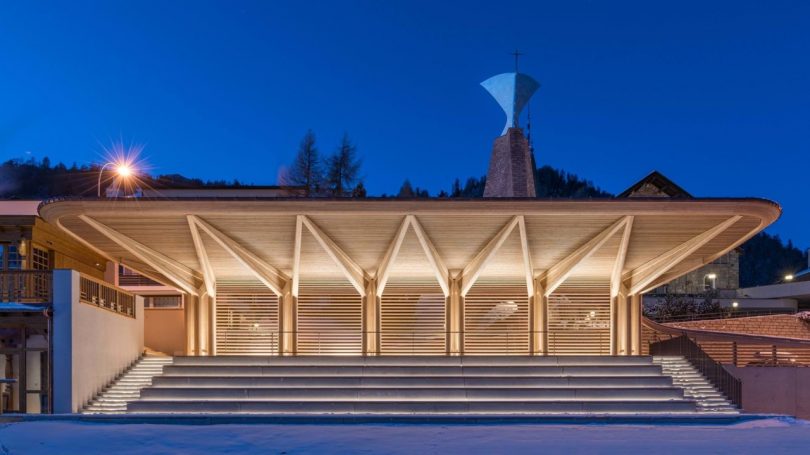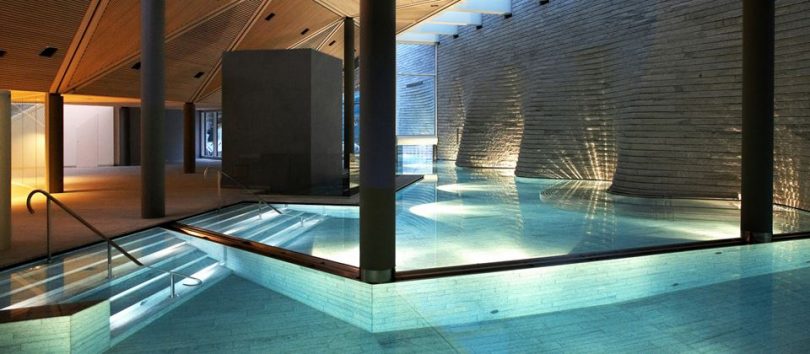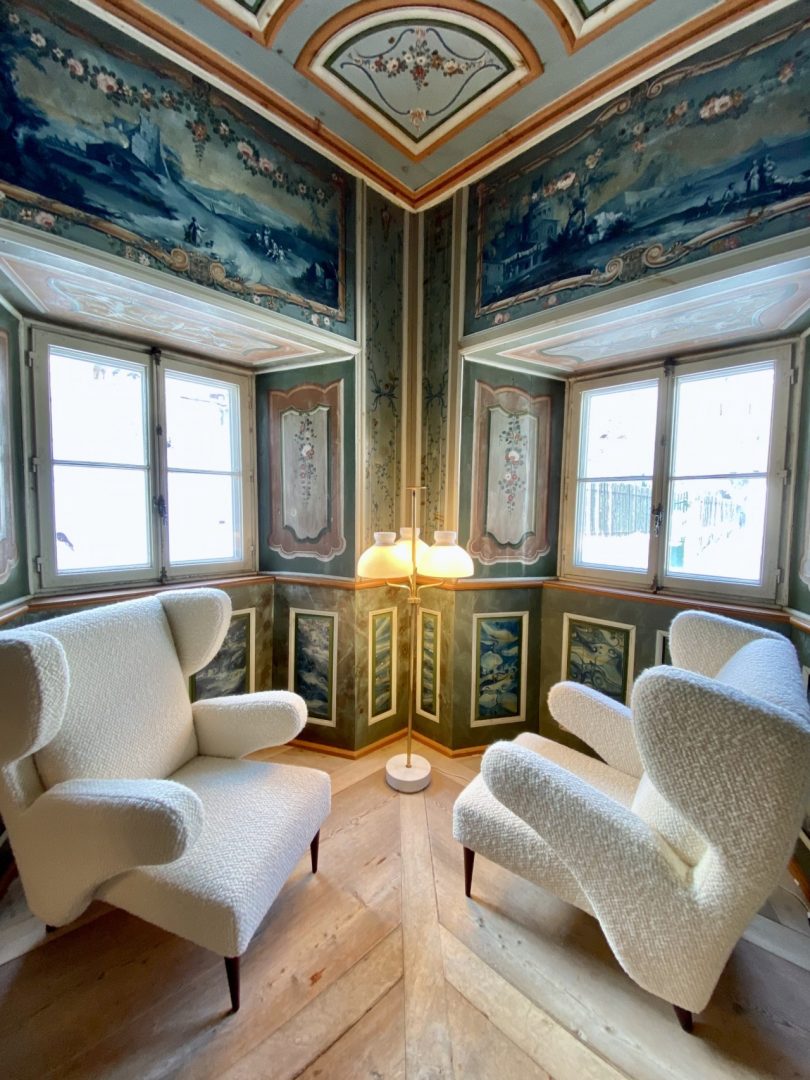Switzerland’s St. Moritz has long revelled in its reputation as the premiere destination for royalty, celebrities, and the well-heeled to escape from the depressing cast of grey winters in other parts of the world for the elegant ambiance of alpine living. It is in fact the birthplace of winter tourism – the brainchild of visionary hotelier Johannes Badrutt, whose Kulm Hotel first wooed and wowed English vacationers in 1864 with a “love it or your money back” guarantee. Word of mouth would eventually spread to kickstart what would snowball into the glamorous snow-ladden culture now associated with the chic alpine destination in the most expensive country in the world.
Today, the elevation of wealth and landscape on display in St. Moritz continues to extend to extraordinary heights, with opulent accommodations, decadent dining, and death-defying winter pastimes attracting vacationers with promises of 5-star stays graced by 320 days of sunshine a year.
Where to Stay
With its noble Neo-Baroque silhouette standing against the towering sawtoothed Upper Engadin Valley and just a short cross-country ski ride from St. Moritz proper, the Grand Hotel Kronenhof could be mistaken as an anachronistic time capsule of alpine luxury. There’s no denying the hotel is unapologetically grand in demeanor, old world in its charm. A glowing crown atop of its domed front cues all intending to enter, beauty rules this roost.
And indeed, the hotel’s history spans over 170 years – the survivor of two World Wars, weathering a succession of owners alongside the ebbs and flows of the global economy – emerging impressively intact as a magnificent example of a bygone era where resplendent artisan craft embellished rooms from floor to ceiling.
The echoes of festivities past are to be found throughout the hotel’s winding hallways, including an antique single lane bowling alley (complete with a totally awesome retro boombox delivering the jams), a newly redecorated smoking room, and a secret speakeasy basement bar embellished with remnants of the hotel’s historic ties to wine and skiing.
Yet the Grand Hotel Kronenhof is in the process of inviting a degree of modernity within, only recently revealing 13 rooms and suites awash in the tastefully calculated contemporary efforts of interior designer Pierre-Yves Rochon. The hotel’s efforts have struck the balance between respecting the wishes of generations of returning guests desiring tradition, while also satisfying a new generation of alpine guests appreciative of the hotel’s history, but also demanding of a contemporary experience.

The Grand Hotel Kronenhof’s historic past lives comfortably in harmony with a contemporary spa and indoor pool wing where guests can wade in the warmth of a heated pool on the most frigid of alpine days while watching ice skaters glide by just out its windows. Photo: Gregory Han
Even if you never intend to stay at the Tschuggen Grand Hotel, you may want to book a treatment at Tschuggen Bergoase, the hotel’s architecturally conspicuous 4-floor wellness center. Designed by Swiss architect Mario Botta, the hotel’s adjoining spa and pool facility (free for hotel guests) is housed within erections of Duke White granite stone sourced from the Alps, topped by vertical sails of of glass that take on the glow of enormous lemon slices at night.
If you do have reservations as a guest, you’ll be treated to rooms executed by interior designer Carlo Rampazzi, who has finished each grade of room with a pastiche of colors and textures bordering on the whimsical – a warm and showy effect emphasized against the snowy serenity of the nearby alpines.
The Tschuggen Grand Hotel also stands out as a completely carbon neutral property, designed and constructed for minimal CO2 emissions, offering guests four tiers of pricing intended to offset emissions generated by their journeys to and from the hotel, while also offering complimentary pick-up service for guests arriving by train (a highly recommended and easy mode of arrival and departure from St. Moritz.)

Tucked in the topography of the Engadine Valley, the Nira Alpina’s glass and slatted timber exterior leaves a contemporary and minimal imprint against a mountainside just outside the borders of St. Moritz. Geothermal power keeps the entire interior warm.
If we were to imagine the typical Nira Alpina guest, it would be a *Wallpaper reading vacationer; an avid hiker, skier, mountain biker, and all-around outdoor adventurer appreciative of the veneer of sedate luxury, but most desirous to be outdoors enjoying all the Swiss Alps can offer.
Rooms are finished with a contemporary confidence, with wood and earthen tones giving precedence to the awe-inspiring views of the Engadin Mountains framed by windows spilling out to balconies and terraces, and an eclectic selection of vintage and contemporary artwork decorating public spaces.
If luxury ranks secondary to experience in your travel plans, the Hotel Hauser St. Moritz offers an affordable and contemporary home base for the budget design traveler, centrally located in the heart of St. Moritz and just a bus ride and ski lift’s journey from exploring the Upper Engadin.
The hotel’s origins has a tasty past, originally founded as a family operated bakery-confectionary shop in 1892 before slowly transitioning to a modest 18-room hotel in 1955. The hotel’s distinctive exterior is the work of architect Robert Obrist, a self-supporting structure set on pillars, built upon the foundations of the original modest, traditional structure. The 51 rooms are tastefully simple, furnished with moon-phase-harvested larch or mountain pine, supposedly imbued with lunar-aided properties of questionable scientific repute (but undisputedly fragrant and beautiful).
Notable mentions: Kulm Hotel St. Moritz \\\ Auberge Resorts Collection St. Moritz (slated to open in 2022) \\\ Badrutt’s Palace Hotel
Where To Visit
Now its third Swiss iteration, Nomad St. Moritz‘s reputation as a prominent and focused design fair was built upon equal parts far-flung exclusivity and chatter spilled forth from attendees impressed by the intimate experiential installations housed within the event’s 16th-century built, Chesa Planta mansion.

Artist Carsten Höller’s enormous mushroom replica sculpture welcomes guests entering Nomad’s reception “cabin”. Photo: Gregory Han
Established in 2016, the traveling art fair is prominently attended by the set hardly prone to bat an eyelash at artwork, collectibles, and unique contemporary furniture pieces priced in a stratosphere of figures normally associated with car and homes (I on the other hand batted my eyes so often, I eventually just kept them closed). It is at Nomad where collectors and sellers convene to establish the vocabulary of luxury later echoed by media.
The building’s intimate, modest sized rooms present an obvious challenge for those invited to display collections within the classical architecture setting, but there’s an undeniable pleasure in witnessing the skillful efforts used to create an in situ ambiance using the mansion’s pre-existing interior features in relation to a gallery’s temporary display of objects.
Nomad’s “by invitation only” nature makes a ticket in attendance a special thing indeed. So to quote a most mischievous sage, “If you have the means, I highly recommend picking one up.”

Pritzker Prize–winning architect Norman Foster has left his imprint across St. Moritz, most notably in his bulbous timber clad Chesa Futura, followed up a renovation of the Kulm Hotel’s 110-year-old Eispavillon overlooking the historic five-star hotel’s winter ice skating rink and summertime park. Photos: Foster + Partners
Notable mentions: Chesa Futura \\\ Kulm Eispavillon \\\ Parkhaus Serletta and St. Moritz Design Gallery
Where To Shop
The wide swath of international luxury brands lining St. Moritz streets clearly informs of the clientele who come to holiday in the Swiss Alps, with no dearth of options to test the credit limits of even the platinum carded. Only recently the efforts of Parisian architect Luis Laplace bestowed St. Moritz with their own Hauser & Wirth gallery outpost and retailers like esteemed Swiss watchmaker, Bucherer continue to put their best foot forward for shoppers seeking the best St. Moritz can offer.
But personally, I’ve found St. Moritz’s most coveted gifts can be procured in a couple shops only a few blocks from one another at a more reasonable price. Firstly for the sweet tooth: as an avid lover of all things chocolate, I highly recommend leaving enough room in your luggage to come home with a wide selection of fine artisan sweets from Swiss chocolatier, Läderach. I regretfully only purchased two boxes during my last visit, immediately regretting a rare instance of self-control. Confections are made with an eye for design and presentation, making them ideal souvenirs, but as good as they look, they’re exceeded by their immensely satisfying spectrum of flavors.
A two minute walk from Läderach discreetly located in a quiet alleyway is Glattfelder, a family-operated shop dedicated to loose leaf and bagged teas, alongside coffee, caviar, salmon, and spices (apparently covering all of the necessary dietary needs of the average St. Moritz citizen.) Mixed in with the usual assortment of black, white and green teas, a selection of herbal blends made from flowers and plants sourced from the Swiss mountains offer an aromatic gift to bring back home in remembrance of this high altitude paradise.
Final Thoughts
St. Moritz’s reputation is built upon its appeal as a wintertime destination, but summertime adventures in this alpine region of Switzerland offers another wholly different yet equally unforgettable experience for those drawn to hike ever upward. In warmer months, mountainside trails are garlanded by alpine flowers, misted by glacial-fed streams, and occasionally garrisoned by sure-footed ibex, greeted by melodious marmots, and most ignored by emo-coiffed Highland cows.
If it’s your first time visiting St. Moritz, consider booking a train ride from Zurich. The four-hour journey will afford you an unceasing opportunity to fill your Instagram with Switzerland’s most picturesque landscape from the comforts of a smooth riding train. If you’re planning to stay for an extended period, a Swiss Travel Pass not only permits access to the Swiss Travel System’s trains, buses, and boats, but also gives free access to over 500 museums and mountain excursion up to Rigi, Schilthorn, Stanserhorn, and Stoos.
If you’ve traveled to St. Moritz, Switzerland and have any additional favorite spots or recommendations for first time visitors, let us know below so we can share (and also check it out ourselves the next time we’re there).
from WordPress https://connorrenwickblog.wordpress.com/2020/02/27/design-milk-travels-to-st-moritz-switzerland/





















No comments:
Post a Comment